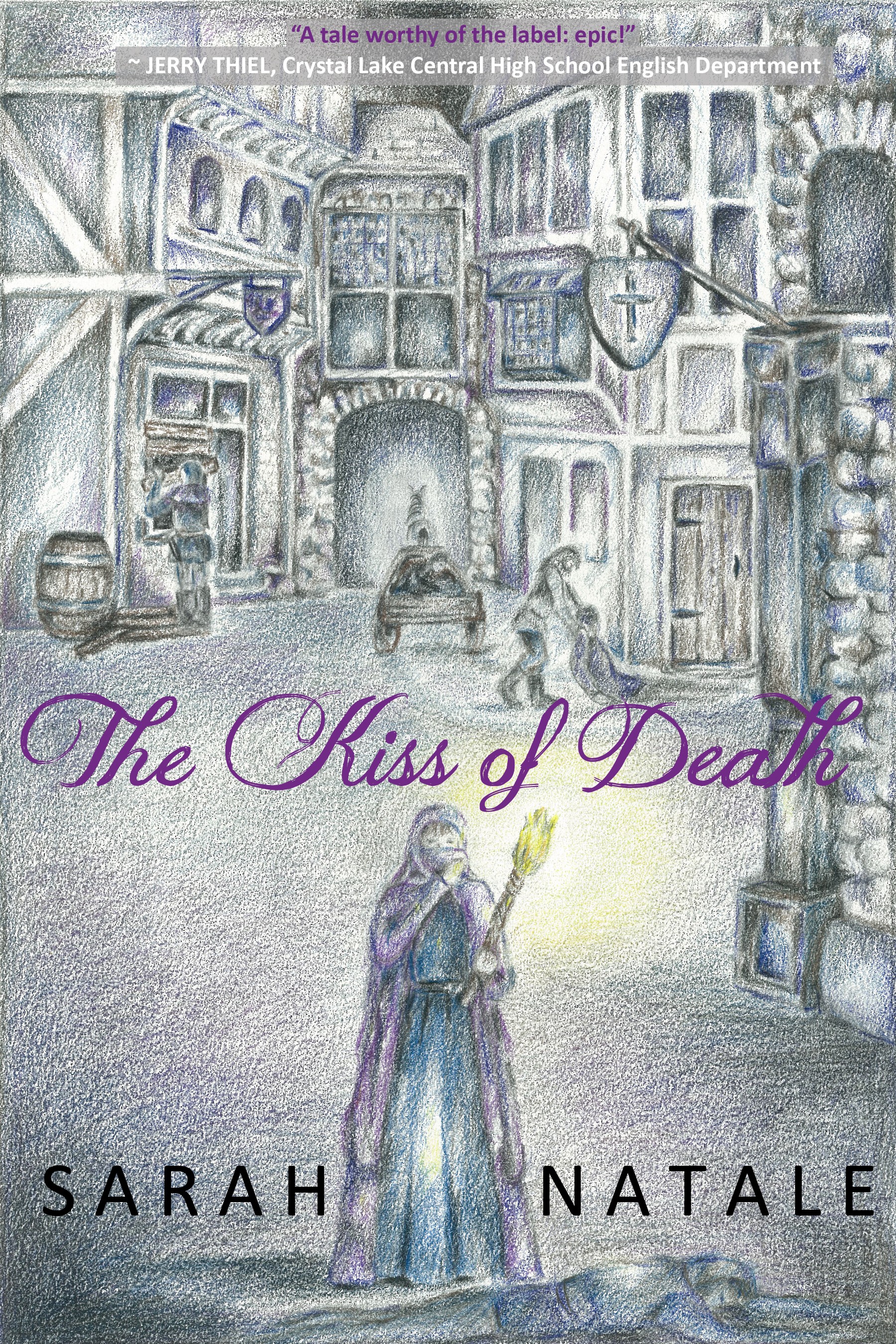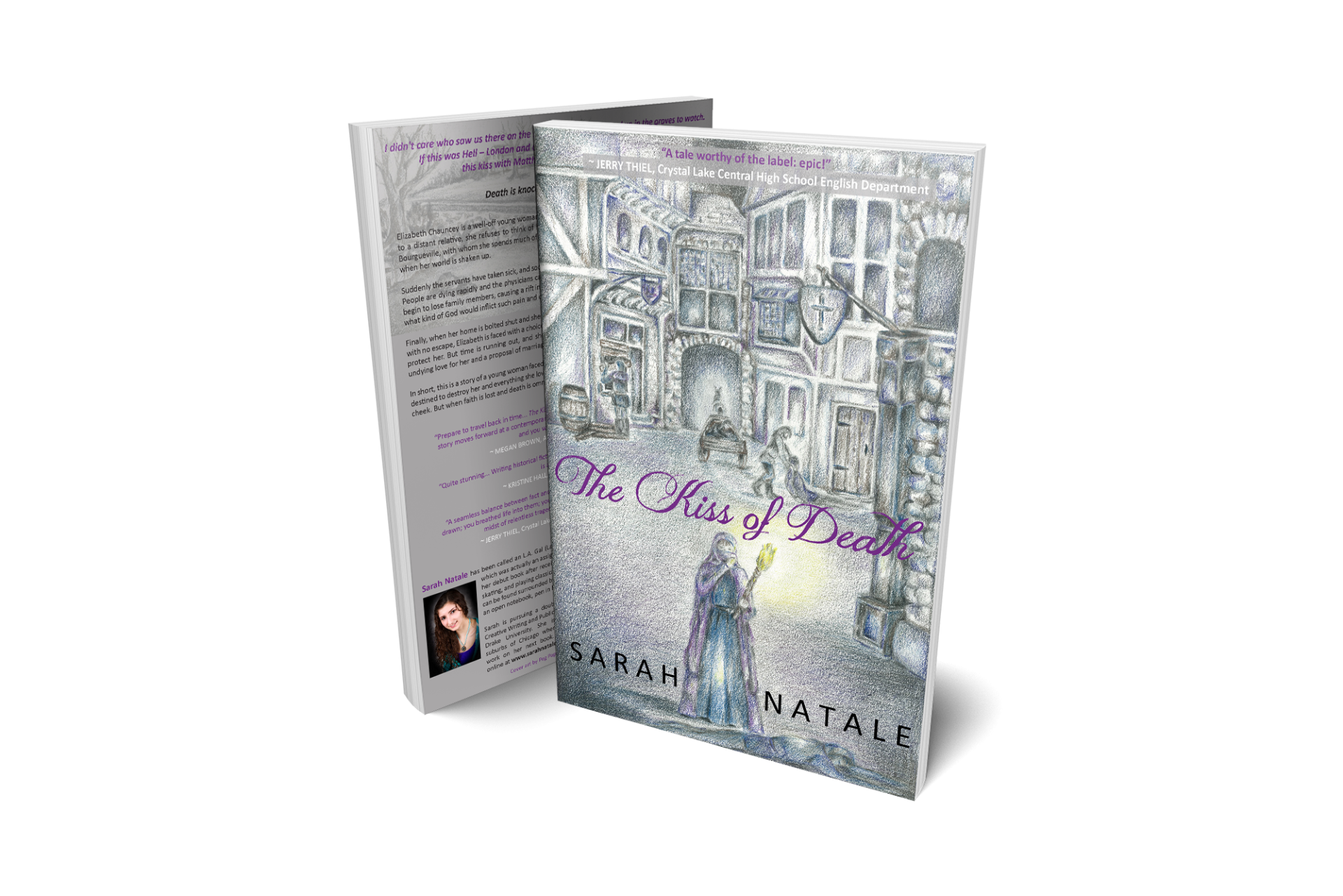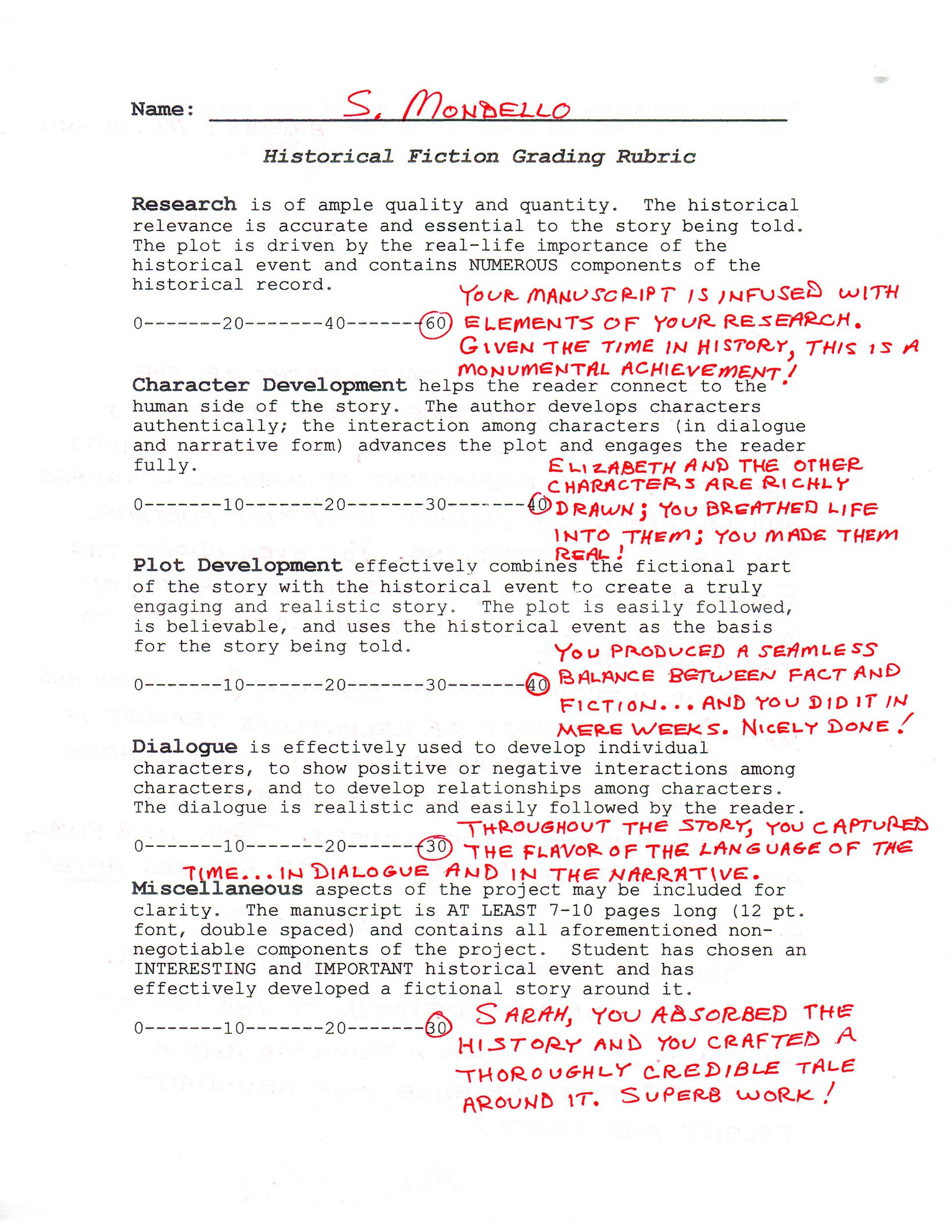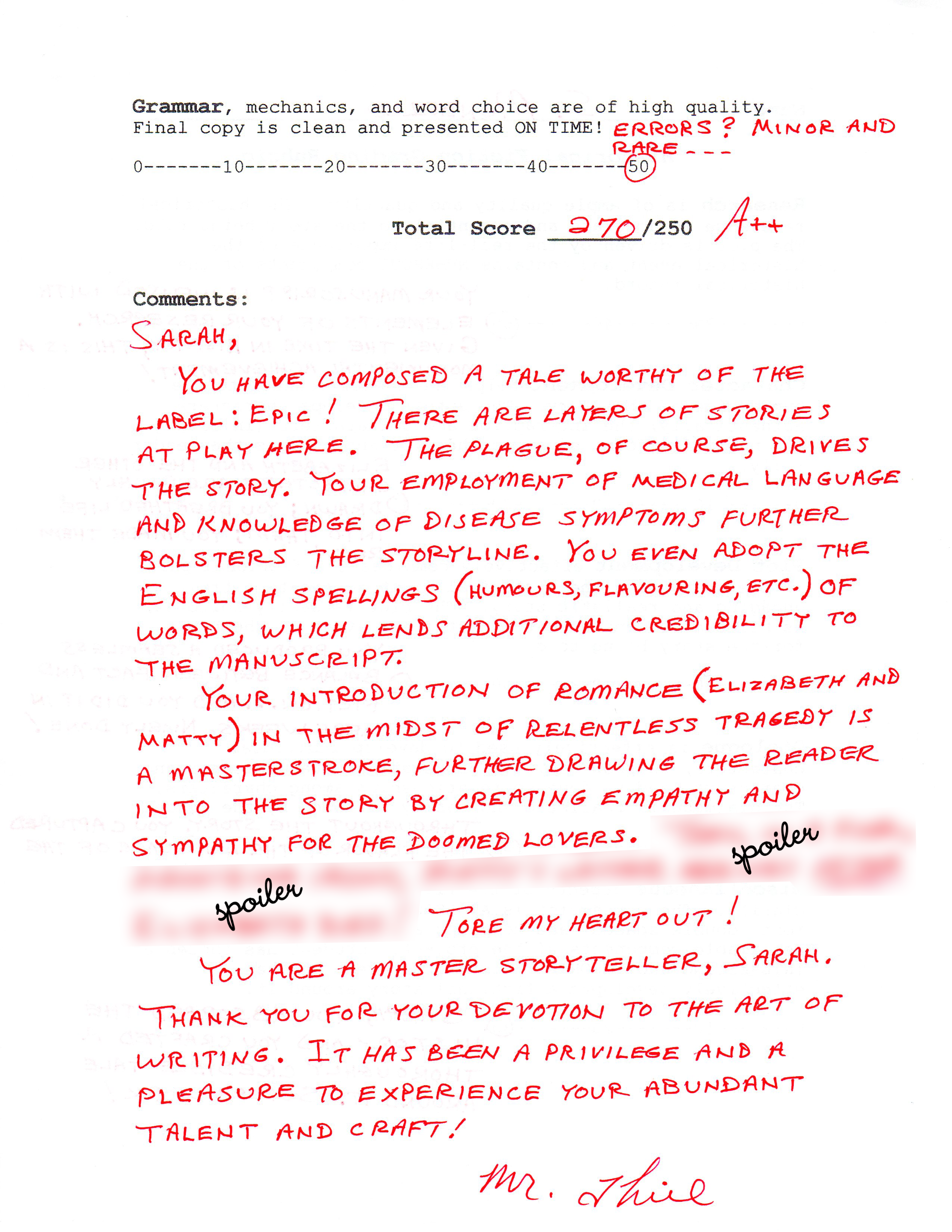Elizabeth Chauncey is a well-off young woman in 14th century London. Though she is considered nobility due to a distant relative, she refuses to think of herself as such. She is close to a childhood friend, Matthias de Bourgueville, with whom she spends much of her time. They have just returned from an outing at the theatre when her world is shaken up.
Suddenly the servants have taken sick, and soon everyone in London is becoming ill with a mysterious disease. People are dying rapidly and the physicians can do little to halt the spread of disease. Elizabeth and Matthias begin to lose family members, causing a rift in their relationship as love and religion come between them. For what kind of God would inflict such pain and cruelty?
Finally, when her home is bolted shut and she and her sick and dying family are trapped inside a Plague House with no escape, Elizabeth is faced with a choice: remain and die, or flee and take cover in the faith that God will protect her. But time is running out, and she is losing hope. To top things off, Matthias has professed his undying love for her and a proposal of marriage. But if they’re all to die anyway, what is the point of going on?
In short, this is a story of a young woman faced with the pain of loss and decision to stay strong in a world that’s destined to destroy her and everything she loves. It is the tale of looking death in the eye and turning the other cheek. But when faith is lost and death is omnipresent, will she refuse its kiss? Read the first chapter!
Medieval Plague (1347-1351) Fun Facts
- Cause: Bacterium Yersinia pestis
- Common names: Great Mortality, Great Pestilence, Black Death
- Outcome: Devastated 1/3 of Europe’s population (20 to 30 million deaths between 1347 and 1351)
- Most common strains: Bubonic, pneumonic, septicemic
- Bubonic strain: The most widely referenced, but actually the least deadly
- Origin: East Asia (central China) in 1333
- Entry into Europe: Via trading ships in the Messina, Sicily harbor in 1347
- Entry into London: November 1, 1348
- Treatment practices: Primitive and usually ineffective
- Common treatments: Bloodletting, avoiding bathing
- The plague today: Still exists, but outbreaks are rare
- Modern treatments: No vaccine, but cure available via antibiotics
^ Never-before-seen content!
(Dedication & Acknowledgements)
The Kiss of Death encompasses a struggle for survival amidst a backdrop of deadly plague in medieval London, with a hint of romance.
THE KISS OF DEATH
Death is knocking. Will you refuse its kiss?
Reader Reviews:
“An excellent first novel... the author captures a time in history that most people know little about.” —Amazon reviewer
“The writing made me… curious about this time period and the author gave me a [clear] picture of what it must have been like to live during that century.” —Amazon reviewer
“Suspenseful, charming and played on my heartstrings. The story pulled me in and I really felt for the characters... Beautifully written” —Goodreads reviewer
“Considering that the author wrote this in high school, it's a highly impressive read... I look forward to reading more from Sarah Natale.” —Goodreads reviewer
“The story was intriguing and the book was very well-written. The author also obviously did a lot of research on the time frame that the story took place in to add extra detail . . . I [only] wish it had been longer.” —Goodreads reviewer
Teacher Reviews:
“The Kiss of Death, would be a great book for Social Studies teachers to teach about medieval times and the plague. My students really enjoyed it, especially since we were reading Edgar Allen Poe, and it provided another perspective on how the plague impacted history.” —Belinda Strebel, Bernotas Middle School 7th grade LA/SS Teacher
“As we prepared for her visit, we read her story. My students were sparked to research and learn more about the time period. They were reading, researching, learning, discussing!” —Tricia Baltzersen, Marlowe Middle School 6th grade Literacy Teacher
“We are excited about getting copies of her book and using it for our class read aloud. We look forward to her next publication!” —Nikki Rodio, Bernotas Middle School 7th grade LA/SS Teacher
“The students are really looking forward to reading her book.” —Ben Conrad, Bernotas Middle School Library Director
“The teacher's guide that accompanies The Kiss of Death provides teachers with discussion questions as well as activity guides. The teachers and students cannot wait to get their hands on copies of her book so that they can find out what happens to Elizabeth.” —Erin Anderson, Crystal Lake Elementary District 47 Director of Literacy and Social Studies
“The Educator Guide for The Kiss of Death is a great resource to help facilitate cross-curricular learning between Social Studies, Literacy, and even Science! This resource is aligned to the Common Core State Standards and is a great tool that teachers can easily use in their classroom.” —Taya Pennington, Marlowe Middle School 7th grade Social Studies Teacher
“While reading her novel to the class, students were engaged in the story and couldn't wait to hear what would happen next with Elizabeth. It kept them analyzing and critically thinking about the story in a way that tied in History perfectly. The ending left everyone with questions and had students wanting more! They are anticipating what could happen next!” —Amanda Manta, Parkland Middle School 7th grade Social Studies Teacher
“Using The Kiss of Death in my English/History curriculum went really well! The students were so stunned about how the story ended. They immediately got into groups on their own and began discussing various theories on what they think happened to Elizabeth and what will happen to Matthias.” —Kate Metzler, Parkland Middle School 7th grade LA/SS Teacher
Original Assignment Rubric:
Advance Praise:
“A tale worthy of the label: epic!” —Jerry Thiel, Crystal Lake Central High School English Department
“Prepare to travel back in time... The Kiss of Death is redolent with history and tradition, but the story moves forward at a contemporary clip. You will find yourself caring about the characters, and you will miss them at story's end.” —Megan Brown, Associate Professor of English, Drake University
“Quite stunning... Writing historical fiction accurately yet still making it readable and interesting is a remarkable talent.” —Kristine Hall, Woodstock Fine Arts Association
“A seamless balance between fact and fiction. Elizabeth and the other characters are richly drawn; you breathed life into them; you made them real! Your introduction of romance in the midst of relentless tragedy is a masterstroke. Tore my heart out!” —Jerry Thiel, Crystal Lake Central High School English Department
Press/Blogger Reviews:
“A well-researched glimpse into life in Italy at the start of the Black Death.” —Allison Manley, Book Nook Columnist
“Sarah Natale is young, this was her debut book, and it was surprisingly good. Sarah is for sure an author to keep an eye on because she might just end up as the next big author... I recommend this book to anyone who wants to learn more about both the plague and medieval times. I particularly recommend this as a potential read to teachers or homeschooling parents.” —Cheyanne Murray, medieval historian
Reviews





